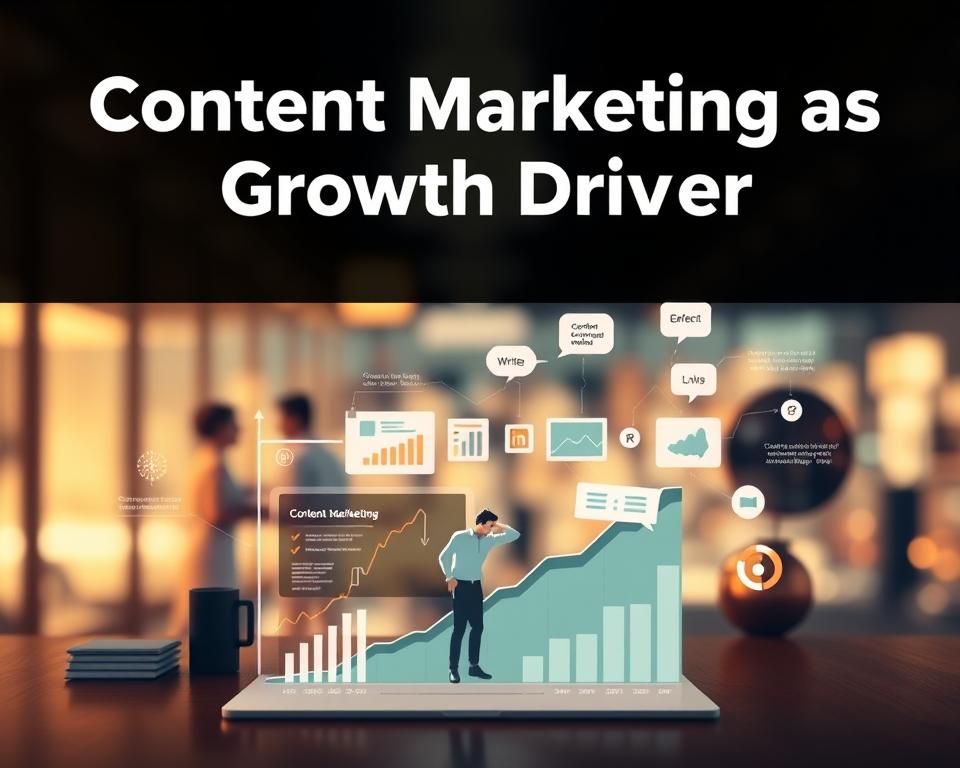24 hours a day Security Monitoring Services in Fremont: Safeguarding Your Firm All over the Clock
Would you believe that zones with constant Security watch see theft and destruction lowered by up to 45%? In today’s ever-changing climate, it is essential for Fremont enterprises to prioritize protection. This defends their functions and resources. Divine Protection Services steps in here, offering 24-hour Security aimed at meeting the singular needs of city companies. Owing to our skilled team and tailored methods, clients are confident their establishments are diligently monitored and secured non-stop. Our quest for superiority and dynamic Security plans positions us among the foremost security guards services Fremont. It ensures serenity regarding business Security.
Comprehending the Value concerning Security Patrol Offerings
Within Fremont, security Rounding Solutions perform a vital part for protecting companies.
They enhance protection and provide serenity.
Apart from just watching, they actively avert dangers.
By committing to these Services, businesses secure their assets and create protected environments for employees and clients.
How security Monitoring Count for Thy Company
Trained security operators prevent crimes including larceny and vandalism effectively.
The presence of security guards increases customer satisfaction by 25%, owing to improved security measures.
Furthermore, these monitoring services can respond to critical situations within approximately 2-3 min.
This quick response reduces the consequence of these situations.
Workforce also are more assured, with a morale increase of up to 30% in settings protected by monitoring rounds.
This confidence derives from feeling secure in their work environment.
Typical Dangers Which security rounds Can Reduce
Mobile security rounds counteract various business threats, like intrusions, vandalism, and staff theft.
Conspicuous security visibility lowers these threats notably.
Evidence suggests that facilities with patrols see a 20% reduction in staff theft.
They also enjoy a 50% quicker reaction to incidents than areas lacking security.
Cutting-edge approaches like 24/7 monitoring and smart sensors moreover lower unauthorized access by 20%.
Such steps ensure a more secure commercial setting.
Principal Elements concerning Specialized security Rounding Services
Expert security Monitoring solutions are crucial in boosting safety and delivering reassurance.
These solutions are critical for companies and locals, offering numerous essential attributes.
Such attributes make security patrol services indispensable for maintaining security.
Experienced security Operatives
Fundamentally robust security monitoring rounds consist of expertly trained officers.
These officers excel in calming strategies, reducing acts of violence by nearly 30%.
They receive training in basic medical assistance, ready to handle medical emergencies.
By observing entrances and questionable behaviors, they significantly improve area security.
State-of-the-art Observation Technology
Current security patrols integrate traditional monitoring with advanced reporting tools.
This blend of technology and human oversight creates a resilient protection network.
With this incorporation, properties see a 70% drop in criminal offenses, showcasing the technology’s value in safety measures.
Customizable Rounding Schedules
Across Fremont, the capacity to customize patrol plans fulfills particular working demands.
Such flexibility is essential to bolstering security measures.
Regular monitoring reviews lower security infringements by half, compared to premises without these offerings.
By varying rounding calendars, predictability drops, curbing 65% of illegal acts stemming from knowing routine behaviors.
| Characteristic |
Result |
| Skilled security Operatives |
30% decrease in incidents of violence |
| State-of-the-art Observation Technology |
70% decrease in effective crimes |
| Customizable Patrol Plans |
50% drop in security breaches |
| Regular security rounds |
25% speedier responses |
| Obvious security Presence |
20% reduction in theft and vandalism |
How Security Patrol Offerings Work in Fremont
The functioning of security patrol services in Fremont is fundamental to maintaining protection.
They are based on assessments, planned schedules, and specific emergency protocols.
Such steps are designed to fulfill the demands of different premises.
On Location Inspections and Security Planning
Security strategies commence with on location evaluations.
These assessments identify a premises’ weaknesses.
Thus, allowing the design of tailored Security strategies.
Elements such as the volume of people, entry points, and prior crime stats are considered.

Routine Rounding Timetables
Across Fremont, routine patrols guarantee continuous security in various settings.
Service coverage may extend from hourly to continuous, customized for each site’s needs.
A blend of automobile, on-foot, and cycle patrols enhances the noticeability and agility of the system.
This strategy is crucial for busy or expansive zones.
Crisis Intervention Protocols
Efficient patrol operations incorporate emergency response measures.
Procedures facilitate prompt response during alarms or suspicious behaviors.
Security teams use cutting-edge communication tools for harmonized efforts.
Recording incidents throughout monitoring improves upcoming Security plans and risk management.
Gains of Engaging Community-based Security Monitoring rounds
Businesses looking to improve their security derive significant benefit from employing regional patrols.
Organizations such as Divine Protection Services thoroughly comprehend their neighborhood.
Such insight allows for fast and personalized replies to threats.
By being highly in tune with the local demands, these services provide rapid emergency response and also deter criminal activity.
Knowledge with the Region
Across Fremont, regional security patrols capitalize on their extensive insight of the locality.
Knowing the nuances of area-specific companies, road conditions, and threats lets them craft focused security plans.
Additionally, their strong bonds with regional authorities enhance these efforts, yielding quicker reaction times and improved safety for the public.
Quick Intervention Times
Local patrols swiftly adjust their solutions to fulfill urgent demands.
Their quick responses, frequently 15 minutes ahead of law enforcement, reassure and secure enterprises and locals alike.
The visible appearance of security personnel acts as a powerful discouragement, effectively lowering incidences of crime in the area.
Building Local Confidence
Collaborating with community-based security companies enhances trust within the local area.
Direct access to administrators in critical situations makes clients feel supported and safe.
These providers’ participation in local projects further boosts their position, creating stronger community ties.
This cooperation promotes a markedly more secure atmosphere, leaving patrons feel decidedly safer with in-person security operators.
Types of Premises That Require Security Patrols
Security monitoring rounds have seen a rise in demand due to increased security worries.
The demand for tailored solutions for diverse zones is evident.
Determining the kinds of properties that require these patrols assists companies bolster their security.
This discussion will concentrate on the primary types benefiting from security patrols: business real estate, industrial sites, and retail locations.
Commercial Real Estate
Business property is a hotspot for stealing and vandalism.
Security patrols markedly lower this hazard.
The continuous presence of security personnel can discourage offenses, reducing criminal incidences.
It’s found that regular patrols halve frequency of incidents by 50 percent, creating safer spaces for everyone involved.
Industrial Sites
Extensive industrial areas with high-value equipment need reliable security.
On-foot rounds perform effectively, providing thorough inspections and engagement with staff.
On-the-go rounds effectively protect extensive zones, improving the security initiatives.
These all-encompassing patrols promote heightened security awareness, nurturing a protected working environment.
Shopping Venues
Shopping venues struggle with pilfering and client disruptions.
Retail security rounding services in City are vital in averting criminal activities.
The view of uniformed guards by itself discourages many would-be offenders; evidence suggests a conspicuous security visibility causes 60% of them reconsider their actions.
Swift interventions to incidents maintain a secure environment, enhancing consumer security.
| Property Type |
Advantages of security rounding services
| Lowered Crime Rate |
| Business Property |
Deter theft and vandalism |
As much as 50% |
| Industrial Sites |
Thorough inspections and engagement |
A 40% rise in alertness |
| Retail Outlets |
Instant response and prevention |
60% of criminals discouraged |
Choosing the Right Security Monitoring Round Service for Fremont
Choosing a security rounding service necessitates a thorough grasp of the business’s needs.
It transcends just cost evaluation.
It’s vital to review the provider’s experience, offerings, and capacity to adjust to challenges unique to your region.
Determining Your Security Requirements
Start by determining your enterprise’s specific security needs.
This encompasses recognizing prospective hazards and flaws.
Knowing if your space is a retail environment, a construction site, or an office impacts your selection.
For example, in Kansas City, for example, security staff are required to have licenses to function in certain areas.
This requirement is essential when choosing security services in Kansas City.
Reviewing Candidate Security Companies
Reviewing potential companies means examining their industry experience and credibility.
Aim for companies that adapt their services to satisfy the particular requirements of your property.
For instance, a trusted vendor might suggest mobile patrols for expansive or risky areas.
Analyzing their offering specifics, response efficiency, and technology use provides an understanding of the patrol service’s competence.
Posing the Appropriate Inquiries
Communicating with potential providers means raising key inquiries.
Examine their training processes and the certification of their personnel, particularly in areas such as Kansas with stringent regulations for armed guards.
Essential questions should focus on:
- What is your reaction plan in case of an occurrence?
- How do you guarantee the accessibility of movable patrols?
- How do you handle communication in crises?
- Could you supply references from other enterprises in my locality?
Such inquiries ascertain if the security provider meets your security criteria and functional needs.
Cost Factors for Security rounding services
To make educated budget choices, comprehending expenditure considerations related to security monitoring rounds is crucial.
Pricing models for these solutions depend on a range of factors, notably in city environments where incidences of crime can increase expenses.
By examining these elements, companies in Fremont may improve their security spending while ensuring robust defense.
Standard Fee Models
Security patrol services provide various fee structures to meet customer requirements.
Typically, fees are based on the hourly rates of security guards, which vary significantly.
For instance, the U.S. national average earnings per hour for security guards is about $17.82.
However, in busy locations like California, unarmed guard rates average about $32.46 per hour.
Customer expenses generally include a surcharge, which can be as high as 2.5 times the pay rate of guards.
Elements Affecting Prices
Multiple elements can influence the total cost of security rounding services.
These factors include:
-
Experience Level: Seasoned guards secure higher wages, starting from $25 per hour.
-
Service Category: Armed security guards may charge $25 to $45 hourly, whereas unarmed guards cost about $20‑$35 per hour.
-
Geographic Area: Costs often rise in regions with elevated criminal activity or particular security needs.
-
Agreement Term: Extended agreements can offer discounts, guaranteeing steady costs and reliable revenue.
Budgeting for Security Measures
During the creation of a budget for security patrols, enterprises need to review the expenses based on their specific needs and regional pricing.
It’s advantageous to obtain estimates from various companies to guarantee affordable pricing.
Additionally, budgets must account for allocations for extra hours, instruction, and specialized gear like monitoring configurations or alert systems.
Grasping cost factors helps Fremont companies to create a comprehensive, effective security budget.
The Role of Technological Advances in Security rounding services
In today’s security sector, technological solutions plays a crucial role.
With advancements such as observation and global positioning system tracking, security patrols have become streamlined.
These upgrades permit patrol services to deliver better safeguarding and serenity.
This is essential for the safety of companies and societies.
Integration of Observation Technologies
The progression of security patrol services has been significant due to cutting‑edge monitoring.
This has enhanced the ability to survey areas in real‑time.
High‑quality CCTV cameras have transformed security, delivering clear images for speedier response to events.
Moreover, data analysis within these setups assist in detecting anomalous actions, boosting security protocols.
Implementation of GPS for Rounds
GPS tracking has optimized the organization of rounding itineraries, securing quick reactions to security violations.
It allows the continuous tracking of rounding trends and evaluation of performance metrics.
This not only enhances rounding productivity but also facilitates the creation of tactics to reduce reaction times.
Businesses benefit greatly from GPS tracking, progressing to enhanced protection administration.
| Technology Type |
Benefits |
| Monitoring Systems |
Live observation, HD visuals, sophisticated danger identification |
| GPS Tracking |
Enhanced routing, efficient resource allocation, transparency in monitoring |
| Artificial Intelligence Integration |
Adaptive threat detection, forecasting analytics, bolstered digital security |
| Unmanned Aerial Vehicles |
Sky observation, large area coverage, live data processing |
Customer Testimonials and Success Stories
Customer feedback often illuminate the true value that security patrol services offer to companies.
Testimonials from users in Fremont highlight the profound impact professional security can exert across multiple industries.
Through analyzing success narratives and detailed studies, the vital gains of these services emerge.
Case Analysis: Retail Security
A retail outlet in Fremont experienced stealing and vandalism decrease significantly after engaging a customized security monitoring round.
The manager reported a 50% reduction in retail theft within the first three months.
This instance proves that focused security initiatives can build a safer store setting.
This, in turn, enhances customer assurance and brand commitment.
Example: Manufacturing Security
A industrial facility previously troubled by safety and security concerns underwent a remarkable transformation.
By teaming up with a dedicated security solution, they not only enhanced security but also staff morale.
The utilization of skilled guards permitted the management to focus on primary operations.
This change highlights the effectiveness of tactical security in boosting operational efficiency.
The response from this initiative highlights the critical role such partnerships play in securing a secure work environment.
This story emphasizes the importance of dependable security solutions, particularly in industrial environments.
The cases presented here demonstrate why it’s wise to invest in premier security monitoring rounds for protecting business assets and employees.
Through such instances, the concrete benefits of high‑quality security protocols in Fremont are clearly demonstrated.
Frequently Asked Questions About Security Patrols
When businesses seek security patrol services, they have important questions about their requirements.
Comprehending the requirements from security solutions facilitates making well‑informed decisions.
Trustworthy patrols provide a vigilant appearance, effectively addressing multiple security concerns.
Q: What to look for in security patrol services?
A: Clients can expect a dependable security presence that takes proactive steps against possible risks.
This entails upholding clear communication.
Security squads consistently inform customers, guaranteeing trust and assuredness in the capability of the service.
Q: How do you maintain effective communication with your security provider?
A: In order to maintain clear communication, create defined reporting procedures and consistent meetings with your security firm.
Such synergy builds the bond.
It enables both sides to resolve problems and adjust plans if required.
Q: Which property categories gain the most from security rounding services?
A: A range of properties such as business properties, industrial areas, and retail sites significantly benefit from security rounding services.
Identifying each property’s specific security challenges facilitates the design of bespoke security plans.
Q: How do security patrols counteract common threats?
A: Experienced security rounding services act as an efficient deterrent to crimes such as stealing and vandalism.
Their watchful appearance prevents break‑ins and loss of property.
This ultimately contributes to a more secure commercial setting.
Q: Which elements affect the pricing of security patrol services?
A: Security rounding services’ costs varies with the required protection level, the frequency of rounds, and property needs.
Companies such as Divine Protection Services deliver flexible pricing to meet different budgetary requirements.
Q: In what ways does technology improve security patrol services?
A: The incorporation of advanced technology, for example real‑time updates and GPS, improves the efficiency of rounds significantly.
These tech tools improve emergency response times and the productivity of operations.
Q: Why should you choose a local security patrol service?
A: Community‑based patrols are intimately familiar with the local area, ensuring faster emergency responses.
Familiarity with the region allows for improved preventive measures.
This acquaintance not only improves safety but also fosters neighborhood rapport.
Q: Which factors are important when selecting a security patrol company in Fremont?
A: While picking a security patrol firm, review your specific protection requirements and the company’s track record and standing, like Divine Protection Services.
Questioning regarding operational details, staff credentials, and crisis procedures is crucial.









